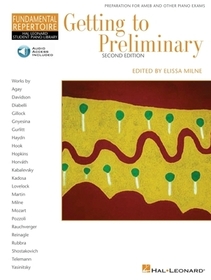
The Fractal Geometry of the Brain
Series: Advances in Neurobiology; 36;
- Publisher's listprice EUR 235.39
-
97 628 Ft (92 979 Ft + 5% VAT)
The price is estimated because at the time of ordering we do not know what conversion rates will apply to HUF / product currency when the book arrives. In case HUF is weaker, the price increases slightly, in case HUF is stronger, the price goes lower slightly.
- Discount 20% (cc. 19 526 Ft off)
- Discounted price 78 102 Ft (74 383 Ft + 5% VAT)
Subcribe now and take benefit of a favourable price.
Subscribe
97 628 Ft

Availability
printed on demand
Why don't you give exact delivery time?
Delivery time is estimated on our previous experiences. We give estimations only, because we order from outside Hungary, and the delivery time mainly depends on how quickly the publisher supplies the book. Faster or slower deliveries both happen, but we do our best to supply as quickly as possible.
Product details:
- Edition number 2
- Publisher Springer International Publishing
- Date of Publication 14 March 2025
- Number of Volumes 1 pieces, Book
- ISBN 9783031476082
- Binding Paperback
- See also 9783031476051
- No. of pages1004 pages
- Size 235x155 mm
- Language English
- Illustrations XXIX, 1004 p. 285 illus., 211 illus. in color. Illustrations, black & white 636
Categories
Long description:
Table of Contents:
Part I. Introduction to Fractal Geometry and its Applications to Neurosciences.- The Fractal Geometry of the Brain: An Overview.- 2. Box-Counting Fractal Analysis: A Primer for the Clinician.- Tenets and Methods of Fractal Analysis (1/f noise).- 4. Tenets, Methods and Applications of Multifractal Analysis in Neurosciences.- Part II. Fractals in Neuroanatomy and Basic Neurosciences.- Fractals in Neuroanatomy and Basic Neurosciences: An Overview.- Morphology and Fractal-Based Classifications of Neurons and Microglia.- The Morphology of the Brain Neurons: Box-counting Method in Quantitative Analysis of 2D Image.- Neuronal Fractal Dynamics.- Does a Self-Similarity Logic Shape the Organization of the Nervous System?.- Fractality of Cranial Sutures.- The Fractal Geometry of the Human Brain: An Evolutionary Perspective.- Part III. Fractals in Clinical Neurosciences.- Fractal Analysis in Clinical Neurosciences: An Overview.- Fractal Analysis in Neurological Diseases.- Fractal Dimension Studiesof the Brain Shape in Aging and Neurodegenerative Diseases.- Fractal Analysis in Neurodegenerative Diseases.- Fractal Analysis of the Cerebrovascular System Physiopathology.- Fractal and Chaos in the Hemodynamics of Intracranial Aneurysms.- Fractal-based Analysis of Arteriovenous Malformations (AVMs).- Fractals in Neuroimaging.- Computational Fractal-Based Analysis of MR Susceptibility Weighted Imaging (SWI) in Neuro-oncology and neurotraumatology.- Texture Estimation for Abnormal Tissue Segmentation in Brain MRI.- Tumor Growth in the Brain: Complexity and Fractality.- Histological Fractal-based Classification of Brain Tumors.- Computational Fractal-based Analysis of the Brain Tumors Microvascular Networks.- Fractal analysis of electroencephalographic time-series (EEG-signals).- On Multiscaling of Parkinsonian Rest Tremor Signals and Their Classification.- Fractals and Electromyograms.- Fractal analysis in Neuro-ophthalmology.- Fractals in Affective and Anxiety Disorders.-Fractal Fluency: An Intimate Relationship Between the Brain and Processing of Fractal Stimuli.- Part IV. Computational Fractal-Based Neurosciences.- Computational Fractal-based Neurosciences: An Overview.- ImageJ in Computational Fractal-based Neuroscience: Pattern Extraction and Translational Research.- Fractal Analysis in MATLAB: A Tutorial for Neuroscientists.- Methodology to Increase the Computational Speed to Obtain the Fractal Dimension Using GPU Programming.- Fractal Electronics as a Generic Interface to Neurons.- Fractal Geometry meets Computational Intelligence: Future Perspectives.
More

Hammer's German Grammar and Usage, 4Ed
15 741 HUF
14 167 HUF










